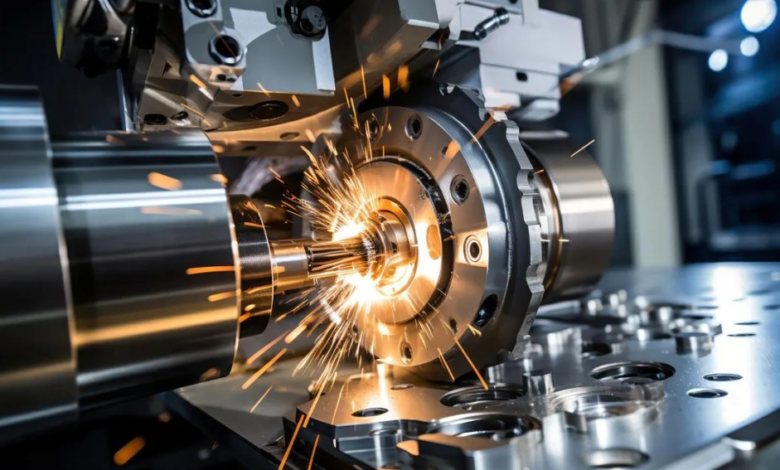Boosting Manufacturing Productivity with cnc turning service

In today’s competitive industrial environment, companies are under constant pressure to produce high-quality parts with speed, precision, and consistency. One of the most effective ways to meet these demands is through cnc turning service, a technology that has transformed how manufacturers handle component production. From large-scale automotive manufacturing to small, intricate medical devices, this service delivers unmatched results when precision and reliability matter most.
This article will explore the features, benefits, applications, and future potential of cnc turning service while offering insights into why it remains one of the most valuable machining processes in the modern world.
What is cnc turning service?
cnc turning service refers to the process of using a computer-controlled lathe to rotate a workpiece against a cutting tool to remove material and create a cylindrical shape. Unlike manual turning, which requires a skilled operator to control the tool manually, CNC turning relies on a digital program (usually derived from a CAD model) that directs the machine’s movements with extreme precision.
This allows manufacturers to produce parts with tight tolerances, intricate shapes, and high repeatability, making cnc turning service ideal for both prototypes and high-volume production.
Core Benefits of cnc turning service
1. High Accuracy
Modern CNC lathes are capable of producing components with tolerances as small as a few microns. This level of precision is critical in industries such as aerospace and healthcare, where even slight deviations can lead to part failure.
2. Repeatable Quality
Once a turning program is set up, the machine can produce hundreds or thousands of identical parts with no variation. This repeatability ensures consistent product quality and reduces the need for time-consuming inspections.
3. Fast Production Times
Since the process is automated, the machine can operate continuously, 24/7 if needed. There’s no fatigue, fewer interruptions, and minimal downtime—boosting productivity and reducing turnaround times.
4. Cost-Efficiency
Though initial setup might involve some investment in design and tooling, cnc turning service becomes increasingly economical with higher production volumes. Fewer errors, reduced material waste, and less manual labor help cut overall costs.
5. Versatility in Design
With the help of multi-axis CNC machines, manufacturers can produce parts that include threads, grooves, tapers, holes, and other intricate features in one seamless operation.
See also: What to Look for When Buying an Internet Business
Materials Commonly Used in cnc turning service
One of the reasons CNC turning service is so versatile is its ability to work with a wide range of materials, including:
- Aluminum – Lightweight, corrosion-resistant, and ideal for aerospace and electronics.
- Stainless Steel – Strong, heat-resistant, and commonly used in food-grade and medical equipment.
- Brass – Offers excellent machinability, often used in valves and plumbing fixtures.
- Titanium – Known for strength and low weight, making it suitable for implants and aircraft parts.
- Plastics – Materials like nylon, POM, and PEEK are used for lightweight or electrical insulation components.
Each material behaves differently under stress and cutting, but advanced CNC systems can be adjusted to accommodate the optimal feed rate, cutting speed, and tool pressure for each.
Industries That Rely on cnc turning service
Because of its broad capabilities and precision, cnc turning service is used across countless industries:
- Automotive – Parts like axles, bushings, engine components, and threaded connectors are often made with CNC turning.
- Aerospace – High-performance components such as turbines, control rods, and landing gear shafts rely on extremely tight tolerances achievable only with CNC turning.
- Medical Devices – Items like surgical tools, orthopedic pins, and dental instruments demand flawless surface finishes and dimensional accuracy.
- Defense – Weapon systems and ammunition casings must meet strict regulatory standards, which cnc turning service helps maintain.
- Electronics – Connectors, pins, and compact enclosures can all be produced with pinpoint accuracy using CNC lathes.
Understanding the Process Flow
The cnc turning process includes several essential steps that ensure precision and efficiency:
- Design – The first step is creating a detailed CAD drawing of the component.
- Programming – This design is converted into G-code, which tells the machine how to move.
- Setup – Material is mounted in the chuck, and tools are loaded into the turret.
- Machining – The machine rotates the material and performs cutting operations as instructed.
- Finishing – After turning, some parts may require deburring, polishing, or coating.
- Inspection – Final components are checked using precision tools like calipers or CMMs to ensure they meet specifications.
Choosing the Right cnc turning service Provider
To get the most from cnc turning service, it’s crucial to work with a reliable provider. Here are a few key factors to consider:
– Experience and Expertise
Providers with a history of delivering complex projects are more likely to handle your requirements efficiently. Ask for case studies or sample work.
– Equipment Capabilities
The latest CNC lathes with multi-axis support, live tooling, and automated bar feeders ensure faster processing and improved quality.
– Quality Assurance
Look for ISO-certified providers who implement rigorous inspection processes, including in-process monitoring and post-machining testing.
– Customer Support
Clear communication, fast quoting, and technical assistance throughout the project are essential for a smooth production experience.
Technological Innovations in cnc turning service
The world of cnc turning service continues to evolve, with advancements that improve accuracy, efficiency, and sustainability. Here are some exciting trends:
- AI & Machine Learning Integration – Some systems now use predictive analytics to optimize tool paths, reduce wear, and prevent breakdowns.
- 5-Axis Turning – This allows for even more complex geometries to be produced in fewer setups.
- Automation and Robotics – Robotic arms can load/unload materials and tools, reducing downtime and human error.
- Smart Monitoring – Sensors on the machines provide real-time data for performance tracking, predictive maintenance, and energy efficiency.
- Eco-Friendly Machining – Biodegradable coolants, energy-efficient motors, and scrap recycling are becoming standard in modern CNC shops.
Future of cnc turning service
As technology advances, the cnc turning service industry is poised to become more automated, intelligent, and sustainable. Small and medium-sized manufacturers now have access to technologies that were once only available to major corporations. Cloud-based CNC systems, remote diagnostics, and adaptive learning algorithms are making the service even more efficient and accessible.
Moreover, with the increasing demand for customization, cnc turning service will play a vital role in delivering tailored solutions without compromising speed or cost.
Conclusion
In a manufacturing world where precision, speed, and cost-efficiency are essential, cnc turning service offers a reliable, scalable, and future-ready solution. Whether you’re crafting a small prototype or manufacturing thousands of high-performance components, CNC turning provides the control and accuracy needed to meet any challenge.
By adopting this technology and partnering with experienced providers, manufacturers can enhance product quality, streamline operations, and stay ahead of the curve in a highly competitive marketplace.





